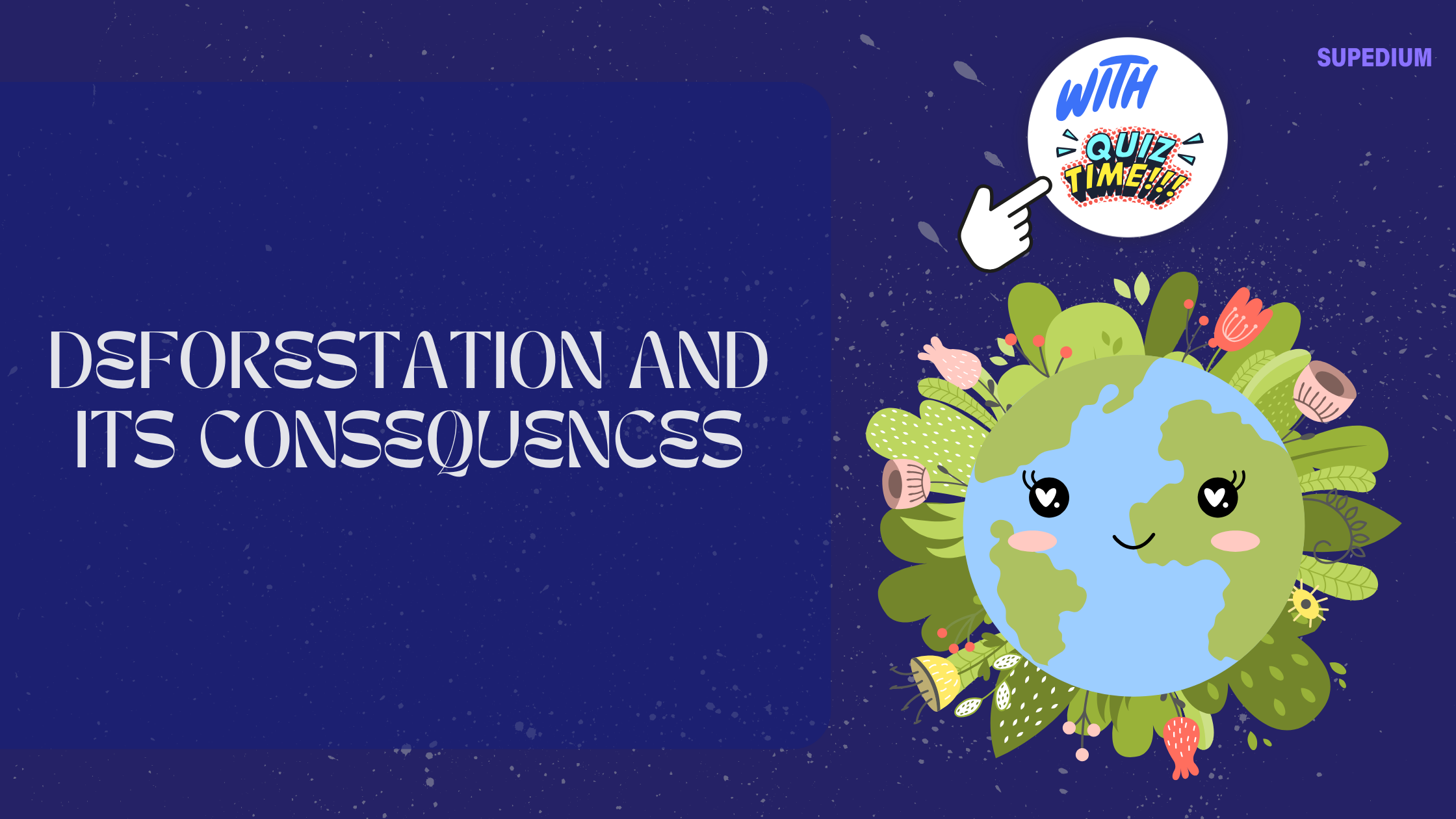Table of Contents
![]()
Introduction
Deforestation refers to the large-scale clearing or removal of forests, a process that has profound implications for the environment, climate, and human societies. Forests are vital ecosystems that play a crucial role in maintaining biodiversity, regulating the climate, and supporting the water cycle. Their preservation is essential for sustaining life on Earth.
Causes of Deforestation
- Agricultural Expansion
One of the primary drivers of deforestation is the expansion of agricultural activities. As the global population grows, there is an increasing demand for food, leading to the conversion of forests into farmland. Crops such as soy and palm oil are particularly significant in this regard. The push for cash crops often leads to extensive deforestation, particularly in tropical regions.
- Logging
Logging, both legal and illegal, contributes significantly to deforestation. Commercial logging operations extract timber for construction, paper products, and other uses, leading to the degradation of forest ecosystems. Illegal logging exacerbates the problem by circumventing regulations designed to protect forests, often resulting in more extensive damage.
- Infrastructure Development
Infrastructure projects, including urbanization and the construction of roads and highways, also drive deforestation. As cities expand and transportation networks grow, forests are cleared to make way for new developments. This not only leads to habitat loss but also fragments remaining forest areas, making it difficult for wildlife to thrive.
- Mining
Mining activities, including the extraction of minerals, oil, and gas, are another significant cause of deforestation. The process of clearing land for mining operations can result in large-scale forest destruction, pollution, and the displacement of local communities.
- Fire
Both natural and human-induced fires contribute to deforestation. Natural fires, while part of some forest ecosystems’ life cycles, can be exacerbated by human activities such as land clearing. In many cases, fires are intentionally set to clear land for agriculture or development.
- Climate Change
Climate change further complicates the issue of deforestation. Rising temperatures and altered weather patterns increase the risk of forest fires and disrupt forest ecosystems. These changes can lead to further deforestation and degradation of forest lands.
Environmental Consequences
- Loss of Biodiversity
Deforestation leads to the loss of biodiversity as forests are home to a vast array of species. The destruction of these habitats can result in the extinction of numerous plant and animal species. Additionally, the disruption of ecosystems affects the complex web of interactions among species, further threatening biodiversity.
- Climate Change
Forests play a critical role in regulating the Earth’s climate by absorbing carbon dioxide and producing oxygen. Deforestation releases stored carbon into the atmosphere, contributing to global warming. The loss of forests also reduces the planet’s capacity to absorb CO2, exacerbating climate change.
- Soil Degradation
The removal of trees and vegetation can lead to soil degradation. Without the protective cover of forests, soil becomes more susceptible to erosion, which can lead to reduced fertility and productivity. This degradation impacts agriculture and contributes to the loss of arable land.
- Water Cycle Disruption
Forests influence the water cycle by regulating rainfall and maintaining river systems. Deforestation can disrupt these processes, leading to reduced rainfall, altered river flows, and increased risk of floods and droughts. The loss of forest cover affects both local and global water cycles.
Social and Economic Consequences
- Impact on Indigenous Communities
Many indigenous communities rely on forests for their livelihoods, culture, and identity. Deforestation often results in the loss of their traditional lands, leading to displacement and cultural erosion. These communities may face significant challenges as they lose access to resources that are integral to their way of life.
- Economic Impact
While deforestation can provide short-term economic gains through activities such as logging and agriculture, it often results in long-term losses. Forest-dependent industries, such as tourism and pharmaceuticals, can suffer as ecosystems are degraded. Additionally, the broader economic impacts of environmental damage can be substantial, affecting various sectors.
- Public Health
The consequences of deforestation extend to public health. The destruction of forests can lead to the spread of diseases as wildlife habitats are disrupted and humans come into closer contact with disease vectors. Additionally, the increase in air pollution from deforestation and associated fires can have adverse health effects on local populations.
Solutions and Mitigation Strategies
- Conservation Efforts
Protecting existing forests through the establishment of protected areas and reserves is a key strategy in combating deforestation. Reforestation and afforestation projects aim to restore degraded lands and increase forest cover. These efforts help to mitigate the effects of deforestation and support biodiversity conservation.
- Sustainable Practices
Promoting sustainable practices is crucial for reducing deforestation. Sustainable logging practices ensure that timber is harvested responsibly, while agroforestry and sustainable agriculture aim to balance land use with forest conservation. By integrating trees into agricultural systems, these practices help maintain ecosystem services.
- Policy and Legislation
Effective policy and legislation are essential for addressing deforestation. International agreements, such as the Reducing Emissions from Deforestation and Forest Degradation (REDD+) program, aim to provide financial incentives for forest conservation. National policies and enforcement mechanisms also play a crucial role in regulating land use and protecting forests.
- Public Awareness and Education
Raising public awareness about the importance of forests and the impacts of deforestation is vital for driving change. Educational campaigns can encourage individuals to make sustainable choices and support conservation initiatives. Consumer behavior, such as choosing products that are certified as sustainable, can also contribute to reducing deforestation.
Case Studies
- Amazon Rainforest
The Amazon Rainforest, often referred to as the “lungs of the Earth,” has experienced significant deforestation due to agricultural expansion, logging, and mining. The impacts on biodiversity, climate regulation, and indigenous communities are profound. Conservation efforts in the Amazon focus on protecting remaining forest areas and promoting sustainable land use.
- Southeast Asia
In Southeast Asia, deforestation driven by palm oil plantations has led to significant environmental and social challenges. Efforts to address these issues include promoting sustainable palm oil production and protecting critical forest habitats. Despite progress, challenges remain in balancing economic development with conservation.
- Africa
Deforestation in Africa is driven by factors such as agricultural expansion, logging, and fuelwood collection. Local and global responses include reforestation initiatives and community-based conservation projects. These efforts aim to address deforestation while supporting sustainable development in the region.
Conclusion
Deforestation is a critical issue with far-reaching consequences for the environment, climate, and human societies. Addressing deforestation requires a multifaceted approach, including conservation efforts, sustainable practices, effective policies, and public awareness. By taking collective action, we can work towards preserving forests and ensuring a sustainable future for generations to come.






Be the first to comment